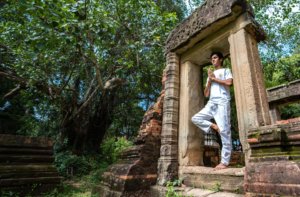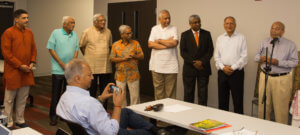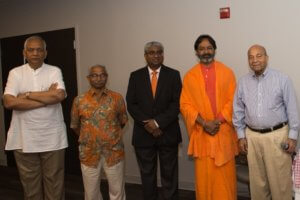Published by Staff Writer, HUA on Oct 14, 2023 12:30:00 PM
Hindu University of America celebrates Hindu Awareness Month with ‘Om Swastiastu’, a musical tribute to the vibrant Hindu culture in Bali, created by Cincinnati based composer and HUA faculty Dr. Kanniks Kannikeswaran. Dr. Kannikeswaran teaches courses on Hindu Temples and the history of Shastriya Sangeet, both of which come together in this spectacular music video.
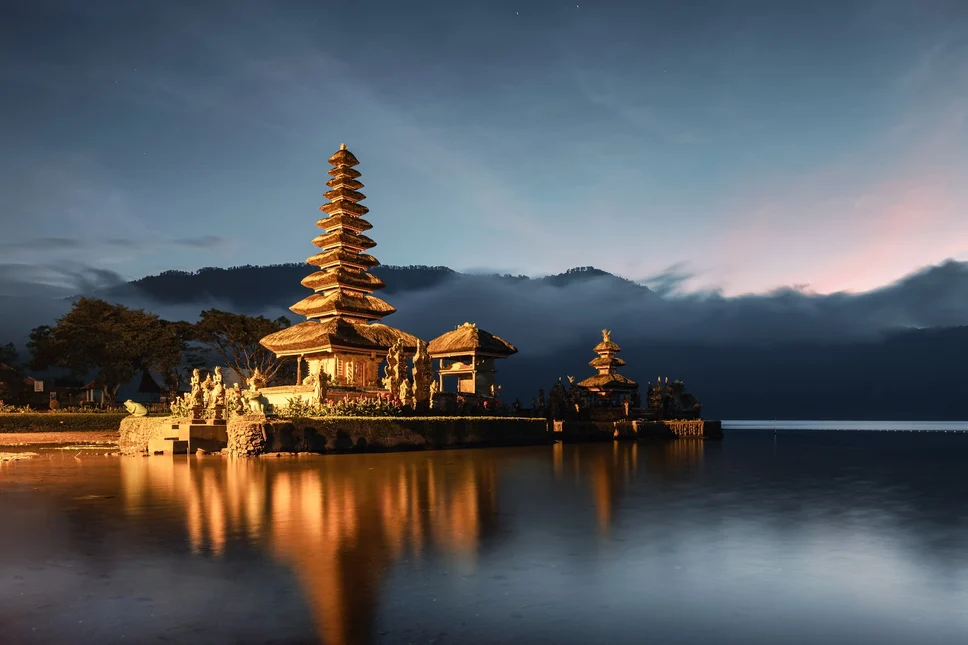
Multi towered Meru in a famous Bali landmark (Pura Ulun Danu)
Bali
The island of Bali in Indonesia has a predominantly Hindu culture. The population is 87% Hindu. “I was blown away by the first words in Balinese that I heard when I exited the airport at DenPasar,” says Kanniks, reflecting on the taxi driver greeting a Parking Booth Agent with the phrase ‘Swasti-Astu’. This is a Sanskrit phrase, a blessing wishing auspiciousness. A week in Bali with trips to various temples and marketplaces in the Ubud area, the rice fields of Jatiluwih, Ulun-Danu and UluWatu, a Gamelan school, the Kechak and Legging dance performers left the composer ‘overwhelmed’ at the cultural connections, the warmth and the hospitality.
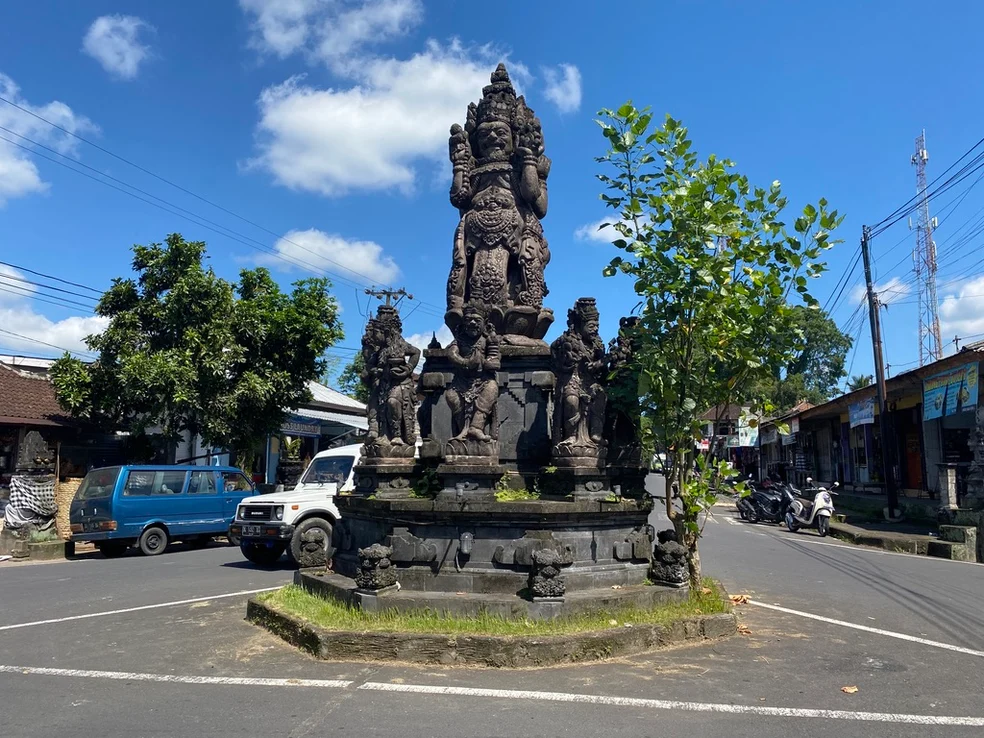
Chaturmukha at a road crossing
Kanniks Bali Film
(An Indian American Composer celebrates Balinese Cultural Connection with India)
The result of this trip is this musical tribute titled ‘Om Swastiastu’ in a medium that integrates Sanskrit, Shaastriya Sangeet, Bharatanaatyam, Balinese Dance and relevant visuals from all over Bali, thus presenting a rich story of Bali in the context of the devata ‘Saraswati’.
The music, in the Southern Indian Raaga Bhupalam (with scalar equivalence to the Balinese Pelog scale) is structured along the lines of the compositions created by Indian composer Muthuswami Dikshitar (1775-1835). Dikshitar was a peripatetic composer, who visited temples all over the region and created ‘Kritis’ in their praise in the Sanskrit language with vivid descriptions of the places visited and their historical and cultural significance, in a collection of terse Sanskrit phrases.
This kriti (devotional composition) is an attempt to showcase the richness of Bali and its commonality with India in a traditional musical template in the pan-Indian Sanskrit language especially given the widespread prevalence of Sanskrit words in Bali. The song addresses Saraswati the Goddess of Wisdom, as Sharada, worshiped all over India from Kashmir to Kanyakumari. The release of this musical tribute in the year 2023 is significant as it coincides with the consecration of the Sharada temple in Kashmir and the historic visit of the Indian Prime Minister to the USA.
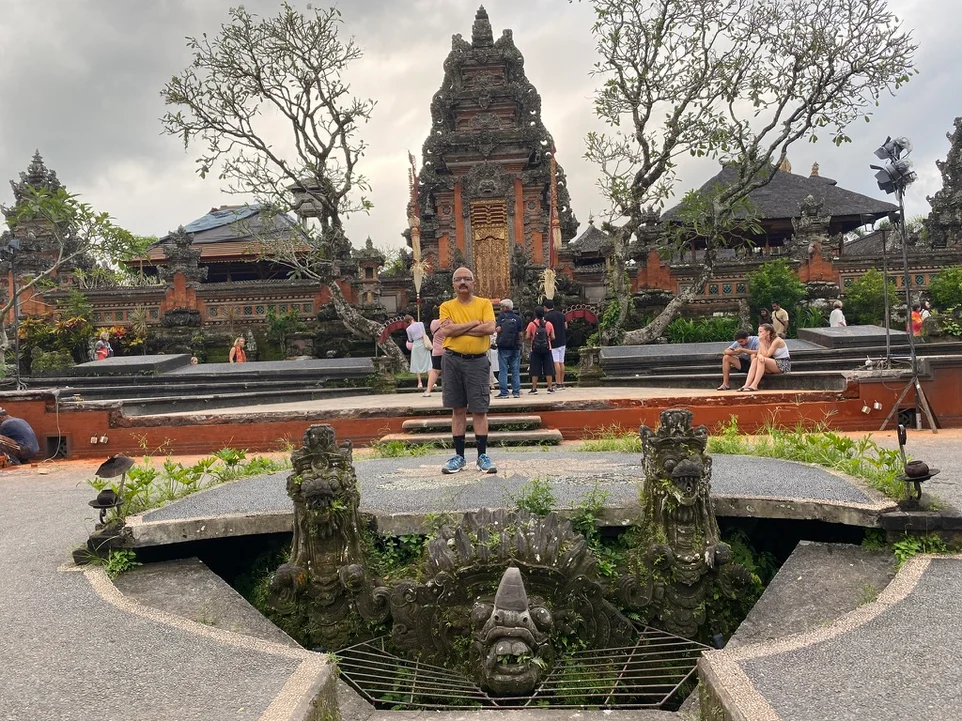
Kanniks at the Saraswati temple in Ubud
Kanniks
Dr. Kanniks Kannikeswaran is an internationally renowned music composer, educator and scholar who is known for his sustained contribution to music and community for the past 25 years. His recent viral video, Rivers of India has received critical acclaim and has gone viral with words of praise from such luminaries as Anand Mahindra. Kanniks is regarded as a pioneer of Indian American Choral music; his far-reaching work in this area has touched the lives of over 3500 performers, inspired the flowering of community choirs in more than 12 U.S. cities, and built new audiences and collaborations. His flagship production ‘Shanti A Journey of Peace’ featuring a cast of 200+ is rooted in the Upanishadic vision of oneness and portrays 5000 years of Indian cultural history using choral music and multimedia.

Kanniks taking a look at the daily offerings made to the various devatas
His research and his first-ever recording of the Indo Colonial Music of eighteenth-century composer Muthuswami Dikshitar in 2008 and his Documentary film ‘Colonial Interlude’ have received critical acclaim and awards in film festivals. Kanniks has collaborated with well-known ensembles and musician such as as Bombay Jayashri, Kaushiki Chakraborty, Ajay Chakraborty, Ranjani and Gayatri, Lakshmi Shankar, the Cincinnati Chamber Orchestra, the Cincinnati Pops Orchestra and others. Kanniks is the recipient of several awards including the Ohio Heritage Fellowship and the Distinguished Alumnus Award from IIT Madras.
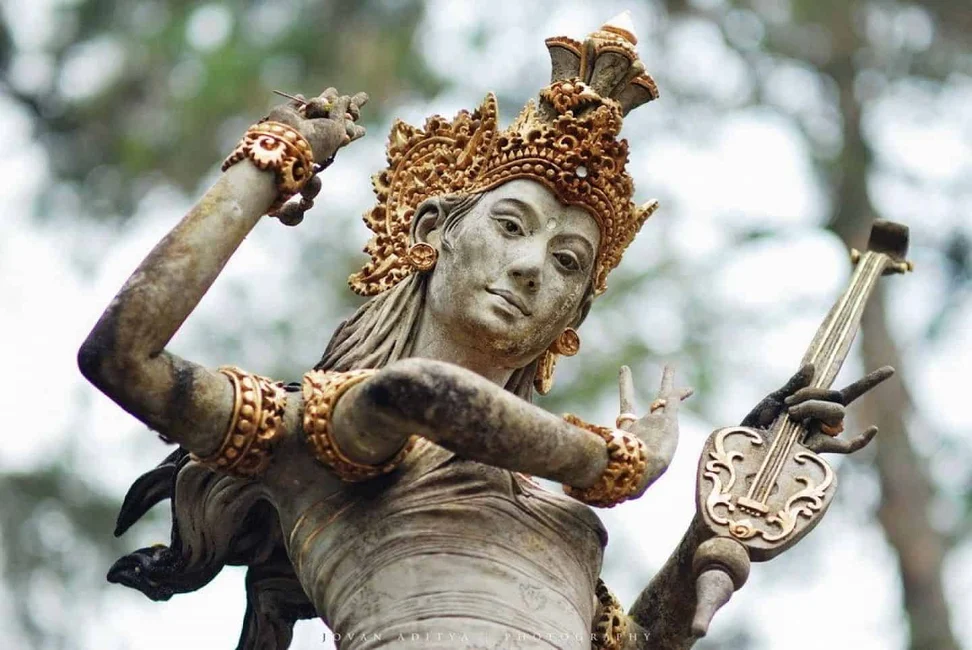
Balinese Saraswati
The Kriti and its Translation
vāgdevī vidhi yuvatī- sarasvatī śārade
vīṇā pāṇI varade -sarasīruha padayugaḷe
śrībalipura śubha nilaye mudam dehi maṇivalaye – vāgdevī
vedānta vedinī kali kalmaṣa nāśinī
nādAnta vihāriṇī brahmāṇyanna pūraṇī
jāḍyāpahe śrī saccidānanda svarūpiṇī
ādyantarahita paramādvaita tatva prakāśinī – vāgdevī
ubūdapura kumuda sarasa madhye
ekādaśa tīrtha vaibhave – acintye
bhūta kāla mahite sumeru śrṅga lasite
viriñci viṣṇu rudra mūrti sahite
vicitra kurma prṣṭa svarṇa padmāsanaste sumate
campaka sugandha vijite – caitanya kusumapriye
kecaka nartanādi gambhīra nāṭaka mudite
gāmaḷānga bherivādya hamsanāda virājite
balipura bhūpāla pāla guruguha gajeśa vidite (vāgdevī)
‘O Saraswati, the Goddess of Speech, the consort of Brahma, One who bears the musical instrument Veena, One who is the Grantor of desires, one who is decorated with gem studded bracelets, Grant me Liberation’.
‘You are known through the wisdom of Vedanta, and you destroy the blemishes of ‘Kali Yuga’. You are the ultimate goal of Nada Yoga; you are also Annapurani who provides nourishment for all (the protector of the rice fields of Bali). You remove inertness; you are the form of truth, consciousness, bliss. You are the very essence of ‘Non Duality’, the state of existence without a beginning or an end’.
‘You are Taman Kemuda Saraswati who resides in a temple adorned with ponds filled with lotus/water Lilies. You are adorned with eleven Tirthas in the village temple. You are of the form of Achintya, that which cannot be comprehended. You are held in awe by Bhuta and Kala and you are resplendent on the tiered Meru. You are worshiped along with the Trimurti Brahma, Vishnu and Rudra; and you are worshiped on the golden Padmasana mounted on a tortoise.’
‘Your fragrance excels that of the Frangipani (Sacred) trees; you delight in the fragrance of ‘Consciousness or Chaitanya’. You delight in the grandeur of the Ramayana and other plays enacted in the Kecak dance form. You are enthroned, on the sacred sound of ‘Hamsa’ produced by the Gamelan ensemble; you are worshiped by Goa Gajah, the protector of the Ruler of Bali’.
Consistent with the compositional paradigm of the 1800s, the text of the composition features the name of the raaga Bhupalam. The raaga’s murchana is based on the Balinese (pentatonic) pelog scale. A modal shift of the tonic on this scale results in the ragas Gambhira Nata and Hamsanadam; and these are illustrated in this composition.
Dr. Kannikswaren has led several cutting edge projects as an HUA faculty member, including the epic Yog Darshan, teaches multiple courses, and encourages and invites participation from everyone, especially those who are musically and artistically inclined. From the rich ancient Hindu civilization, we see its dynamic evolution in the music, dance, architecture, and many aspects of daily life on Bali. Dr. Kanniks brings this to our attention in this project.
